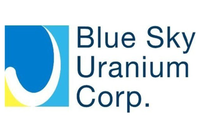Trump Wants US$3 Billion to Fuel America’s Uranium Independence

Millions of dollars are earmarked for energy efficiency and storage, fossil energy research, electricity generation and storage and digital security for the nuclear energy sector.
In his budget request for the 2021 fiscal year, US President Donald Trump is asking for US$35.4 billion for the Department of Energy to fund the country’s energy independence.
Millions are earmarked for energy efficiency and storage, fossil energy research, electricity generation and storage and digital security for the nuclear energy sector.
US$1.3 billion is also allotted to the Office of Nuclear Energy, with US$150 million of that to be used to establish a uranium reserve “to address the challenges to production of domestic uranium.” The budget calls for US$150 million to be spent each year on the stockpile until 2030 for a total of US$1.5 billion.
Annually, the US spends more than US$2 billion on uranium imports, making it the largest consumer of U3O8, which is a vital fuel for utility providers, as well as the US military.
Trump’s decision to focus on funding the nuclear fuel cycle is likely a result of two factors: the country’s Section 232 uranium investigation, which lasted more than a year but produced no concrete measures, and the subsequent Nuclear Fuel Working Group, a task force assembled to examine the entirety of the nuclear fuel cycle as part of the president’s Section 232 decision.
“This year’s budget underscores the importance of nuclear security by increasing funding to modernize and maintain our nuclear stockpile. It focuses on intradepartmental collaboration to advance crosscutting priorities such as energy storage, security, reliability and resilience,” US Secretary of Energy Dan Brouillette said in a press release.
A domestic reserve may ensure the US has a stockpile of the energy fuel; however, according to Nick Hodge of the Outsider Club, the budgetary announcement won’t be enough to motivate the price beyond its current rangebound level (US$24 to US$25 per pound).
When asked how he thinks the news will impact the domestic and international sector, he said, “I expect minimally, until we get a firm announcement on Section 232, and also because the budget request is more of a political document and still needs to be approved by Congress. But it’s a good hint that the administration favors nuclear energy and is willing to support it.”
The motivation behind the multibillion-dollar investment is energy independence, but getting America to be less reliant on foreign uranium producers will take time, especially with a lot of US projects and mines being temporarily shuttered due to the low spot price.
“The US is some 95 percent reliant on foreign sources of uranium. Mining projects have long lead times and can take years to come online,” added Hodge. “This is a step in the right direction, for sure, but much more needs done if America wants secure baseload electricity and reduced emissions.”
Undoubtedly, a cash infusion would be beneficial for US miners and explorers in the long term. However, the uranium market needs a catalyst now to break it out of its rangebound levels and incentivize production and exploration.
“Stock had a muted reaction to the news, which tells you all you need to know,” said Hodge, who also manages the publication Resource Stock Digest. “The incentives and assistance are great, but uranium needs buyers to return.”
For his part, Mercenary Geologist Mickey Fulp doesn’t see the budget proposal leading to foreign uranium independence, even with US$150 million earmarked to annually fill a growing stockpile.
The market watcher noted that the proposal only accounts for 6 to 7 percent of America’s annual demand, and the stockpiled uranium is not slated to be used for nuclear reactors used in electricity generation, anyway.
“This would become part of the national defense stockpile establishing a strategic uranium reserve, much like our strategic petroleum reserve, and it’s not stuff that we need to use, or take out of inventory unless there’s a national security issue,” explained Fulp. “… (They) serve as buffers when there’s market disruptions or destructions, but it should not impact our net imports at all.”
In 2018, the US used 51 million pounds of uranium, but only produced 1.5 million pounds, which shows the vast discrepancy between what the country produces versus what it needs.
“To me it’s a way to subsidize domestic uranium mining, specifically Energy Fuels (TSX:EFR,NYSEAMERICAN:UUUU) and Ur-Energy (TSX:URG,NYSEAMERICAN:URG),” Fulp said about the draft budget.
Both companies are US producers that jointly filed the petition that launched the Section 232 foreign uranium investigation in January 2018.
Another US-based uranium company that could benefit from the news, according to Fulp, is Texas-based Uranium Energy (NYSEAMERICAN:UEC). It has several projects in US states like Texas, Wyoming, Colorado, Arizona and New Mexico, as well as operations in Canada and Paraguay.
“They’re a company that can ramp up very quickly in Texas,” said Fulp. “But they need US$40 to US$50 per pound uranium.”
Fulp, like many industry watchers and participants, has long stated that the uranium spot price needs to almost double from US$24.65 today to at least US$40 to incentivize producers.
And although the uranium sector is praising Trump’s proposition, it is not set and still requires approval.
“Bear in mind, this is a budget proposal, this is the Trump administration’s wish list,” said Fulp. “It does not mean that it’s going anywhere, does not mean it’ll get funded. My estimate is that this will become a bipartisan issue that will get through Congress at some point.”
Don’t forget to follow us @INN_Resource for real-time news updates!
Securities Disclosure: I, Georgia Williams, hold no direct investment interest in any company mentioned in this article.
Editorial Disclosure: Energy Fuels is a client of the Investing News Network. This article is not paid-for content.
The Investing News Network does not guarantee the accuracy or thoroughness of the information reported in the interviews it conducts. The opinions expressed in these interviews do not reflect the opinions of the Investing News Network and do not constitute investment advice. All readers are encouraged to perform their own due diligence.





